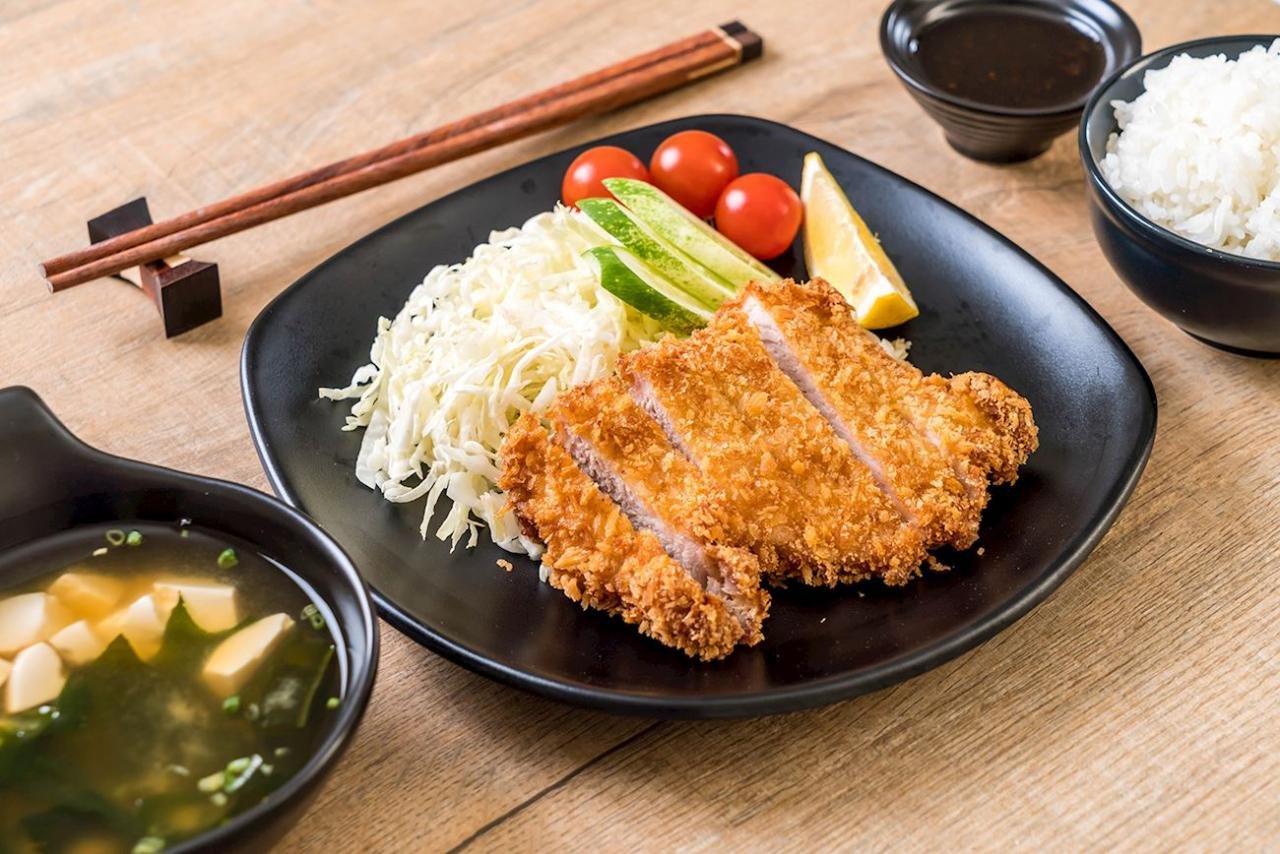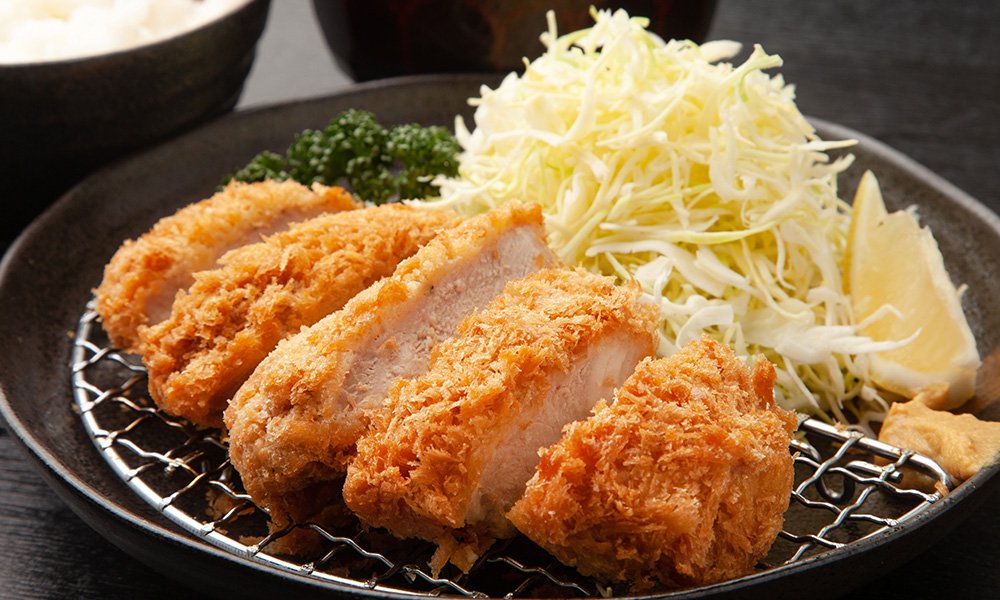A Deep Dive into the World of Japanese Katsu: From Humble Beginnings to Culinary Masterpieces
Related Articles
- A Journey Through Time And Taste: The Alluring Saga Of Beef Wellington
- A Bowl Of Comfort: Exploring The World Of Japanese Ramen
- Sushi: More Than Just Raw Fish
- A Journey Through Time: Exploring The Enchanting World Of Quiche Lorraine
- A Journey Through Flavor: Exploring The Delights Of Laksa
Introduction
Discover everything you need to know about A Deep Dive into the World of Japanese Katsu: From Humble Beginnings to Culinary Masterpieces
A Deep Dive into the World of Japanese Katsu: From Humble Beginnings to Culinary Masterpieces

Katsu, the beloved Japanese dish of breaded and fried cutlets, embodies a captivating blend of simplicity and versatility. Its origins trace back to the 19th century, where Western culinary influences began to permeate Japan. Today, Katsu has evolved into a culinary staple, gracing tables across the country and captivating taste buds worldwide.
This comprehensive guide delves into the history, techniques, and endless possibilities of Katsu, offering a journey through its fascinating evolution and providing the tools you need to create your own Katsu masterpieces.
From the West to the East: The Origins of Katsu
The story of Katsu begins with the arrival of Western cuisine in Japan. During the Meiji Restoration (1868-1912), Japan opened its doors to the world, embracing new ideas and influences. This period saw the introduction of Western dishes like cutlets, which were initially served in Western-style restaurants.
The Japanese, known for their meticulous approach to food, quickly adapted these foreign culinary concepts, infusing them with their own unique style. The result was Katsu, a dish that combined the essence of Western cutlets with Japanese culinary techniques.
The Core of Katsu: Breading and Frying
At the heart of Katsu lies a simple yet elegant process: breading and frying. This seemingly straightforward technique, however, holds a world of culinary nuance.
1. The Art of Breading:
- The Flour Coating: The first layer of breading, a light dusting of flour, plays a crucial role in creating a smooth surface for the batter to adhere to.
- The Batter: The batter, typically a mixture of eggs and water or milk, acts as a binder, holding the flour and panko crumbs together.
- The Panko Crumbs: These coarse breadcrumbs, essential to Katsu’s signature crispy texture, provide a light and airy crunch.

2. Mastering the Fry:
- Oil Temperature: The temperature of the oil is paramount. Too low, and the Katsu will absorb excess oil, becoming greasy. Too high, and it will burn before cooking through. The ideal temperature is between 350°F and 375°F (175°C to 190°C).
- Even Cooking: Ensuring even cooking is key. This can be achieved by gently turning the Katsu halfway through the frying process, allowing for a beautiful golden brown crust on all sides.
- Drainage: Once cooked, remove the Katsu from the oil and place it on a wire rack or paper towels to drain excess oil, ensuring a crisp and satisfying texture.
A Culinary Canvas: Exploring the Diversity of Katsu
The beauty of Katsu lies in its versatility. While traditionally made with pork, its adaptability allows for endless variations, catering to diverse tastes and dietary preferences.
1. The Classics: Pork and Chicken Katsu
- Pork Katsu: The quintessential Katsu, pork cutlet, is a true testament to the dish’s simplicity. Tender pork loin or tenderloin is thinly sliced, breaded, and fried to perfection.
- Chicken Katsu: Chicken Katsu, a lighter alternative to its pork counterpart, features juicy chicken breast, breaded and fried to a golden crisp.

2. Exploring New Frontiers: Beyond Pork and Chicken
- Beef Katsu: Beef Katsu, a bolder and more flavorful option, uses thinly sliced beef tenderloin or sirloin, offering a richer taste.
- Fish Katsu: Fish Katsu, a delightful seafood variation, utilizes firm-fleshed fish like cod or tuna, bringing a delicate flavor to the table.
- Vegetable Katsu: For a vegetarian twist, vegetables like eggplant, zucchini, and sweet potato can be transformed into Katsu, showcasing a unique texture and earthy flavors.
3. The Katsu Family: Expanding the Horizons
- Tonkatsu: The most iconic Katsu, Tonkatsu, features a thick cut of pork loin or tenderloin, creating a satisfyingly substantial meal.
- Katsudon: Katsudon, a beloved Japanese comfort food, features Katsu served over rice, topped with a savory egg and often accompanied by vegetables.
- Katsu Curry: Katsu Curry, a popular dish, combines Katsu with a rich and flavorful curry sauce.
- Katsu Sando: Katsu Sando, a delicious sandwich, features Katsu nestled between two slices of bread, often with a creamy and tangy sauce.
Crafting Your Own Katsu Masterpieces: A Culinary Journey
1. The Essential Ingredients:
- Protein: Choose your protein of choice – pork, chicken, beef, fish, or vegetables.
- Flour: All-purpose flour is ideal for the first breading layer.
- Eggs: Large eggs, whisked with a little water or milk, create a smooth and cohesive batter.
- Panko Breadcrumbs: Japanese panko breadcrumbs are essential for that signature crispy texture.
- Oil: Neutral-flavored oil like vegetable or canola oil is best for frying.
- Salt and Pepper: Season the protein generously for enhanced flavor.
2. Mastering the Techniques:
- Thinly Sliced Protein: The key to achieving tender and evenly cooked Katsu lies in thinly slicing the protein.
- Seasoning: Season the protein generously with salt and pepper before breading.
- Breading Technique: Follow the breading steps diligently: flour, batter, panko crumbs.
- Frying Time: Adjust the frying time based on the thickness of the Katsu and the heat of the oil.
- Resting Time: Allow the Katsu to rest for a few minutes after frying to ensure it’s fully cooked and to allow the oil to drain.
3. Culinary Tips and Tricks:
- Tenderizing: For tougher cuts of meat, tenderizing with a meat mallet or a marinade can enhance tenderness.
- Temperature Control: Use a thermometer to ensure the oil reaches the optimal temperature.
- Don’t Overcrowd the Pan: Avoid overcrowding the pan, as this will lower the oil temperature and result in soggy Katsu.
- Variety in Sauces: Explore different sauces to accompany your Katsu, from traditional Japanese tonkatsu sauce to creamy mayo-based sauces.
- Creative Garnishes: Elevate your Katsu with creative garnishes like shredded cabbage, pickled ginger, or a sprinkle of sesame seeds.
A World of Katsu: Embracing the Cultural Significance
Katsu is more than just a delicious dish; it embodies a cultural narrative of adaptation and innovation. It’s a testament to the Japanese people’s ability to embrace new ideas while preserving their culinary heritage.
Katsu’s popularity extends beyond Japan, attracting global attention and captivating taste buds worldwide. From bustling Japanese restaurants to home kitchens, this versatile dish continues to evolve, inspiring culinary creativity and fostering a sense of shared culinary enjoyment.
Conclusion: A Culinary Journey Continues
This comprehensive guide has explored the fascinating world of Katsu, from its humble origins to its diverse culinary expressions. We’ve delved into the intricacies of breading and frying, explored the endless possibilities of protein and flavor combinations, and provided practical tips for crafting your own Katsu masterpieces.
Whether you’re a seasoned cook or a culinary novice, the world of Katsu awaits. Embrace the journey, experiment with flavors, and discover the joy of creating your own culinary masterpiece. With each bite, you’ll savor not just the deliciousness of Katsu but also its rich cultural heritage and the enduring power of culinary innovation.
Closure
Thank you for reading! Stay with us for more insights on A Deep Dive into the World of Japanese Katsu: From Humble Beginnings to Culinary Masterpieces.
Don’t forget to check back for the latest news and updates on A Deep Dive into the World of Japanese Katsu: From Humble Beginnings to Culinary Masterpieces!
Feel free to share your experience with A Deep Dive into the World of Japanese Katsu: From Humble Beginnings to Culinary Masterpieces in the comment section.
Stay informed with our next updates on A Deep Dive into the World of Japanese Katsu: From Humble Beginnings to Culinary Masterpieces and other exciting topics.






